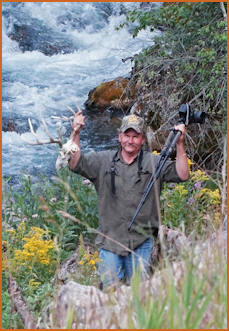
Mark
Photo by Jim Cook |
Common Questions
Like all jobs in life one can become very good at their work
or personal passions. Mark became good at locating animal
remains. The most common way Mark searches for the remains
of wild creatures, is the old fashioned way. A backpack
loaded with camera and camping gear. Locations are selected
ahead of time using mapping programs and Google Earth.
These areas
are then walked and if scat and track densities are high
enough then specific habitats are searched carefully for
remains.
Below are commonly
asked questions about Mark's work.
|
Autos
Automobiles are by far the largest killer of wildlife. Over
one million animals die EACH DAY on roads in the United
States. Road mortality is the leading cause of vertebrate
deaths in the USA, easily surpassing hunting. |
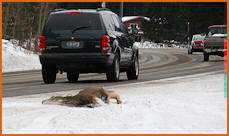
Deer |
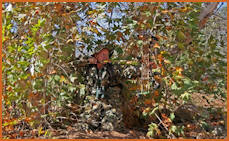
Hunting |
Hunters
During hunting seasons, especially archery only seasons,
wildlife are wounded and wander off to their secure
locations to die. Unlike humans who know someday death is
coming, creatures are unaware of death and simply feel
poorly and seek their common shelter. |
Age
As with humans, creatures age and die. They commonly find
safe, familiar and secure surroundings to rest in and die.
Each species prefer different habitats. For instance mule
deer prefer thick sunny sides hills, a few hundred yards
down from top points. Their remains can commonly be found
here. City pigeons choose abandoned buildings or high
openings such as church steeples. |
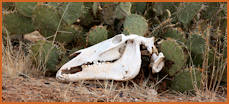
Horse |
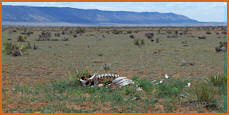
Lightning |
Natural Dangers
Instances of this include lightning, flash floods, extremely
cold winters, and many more. For instance in flat grassland
areas where antelope and cattle are commonly found, they can
be struck by lightning during thunderstorms. |
Predation
In Nature predator / prey relationships can lead to
high mortality rates and many succumb to this
process.
Mountain lions cover and hide their dead prey. Coyotes tend
to scatter remains. Ravens, crows and vultures can point the
way to recent wildlife death by their flying behavior.
|
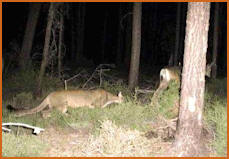
Mountain Lion/Deer |
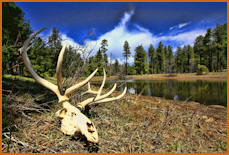
Elk |
Disease
Disease is a natural but harsh factor in controlling
wildlife populations. For instance the epizootic hemorrhagic
virus, which can occur within high density deer populations,
commonly force them to waterways where mortality rates can
be high. Remains can be located within these areas. |
Native American
Trophy trees
Some Native American Indian cultures refrain from bringing
the head of their deer, antelope or elk home. Instead they
return the head after the kill to a remote designated tree
and tie the animal head on the tree facing the east. They
believe by doing this the deceased creature faces the
sunrise each day. This is also done out of respect for the
creature and thankfulness to the Great Creator for providing
food. Traditional Navajo hunters do this and the trees over
time can acquire quite a collection. Mark has been invited
to these sacred mountains in the past but out of respect no
photographs were made.
|
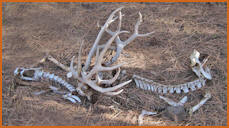
Locked Antlers |
Fighting
Creatures commonly battle for domination during certain
periods. When death occurs they can be located in these
habitats, where this behavior occurs.
There are many other factors that lead to wildlife death.
Mark uses this information and other techniques for locating
the remains of wildlife.
Mark strives to photograph animals in their natural
environment. Many times this is not possible because the
landscape the creature died in is not beautiful. At this
point the animal is moved to a more pleasing area nearby. |
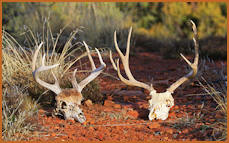 Image Creation Image Creation
Over the years Mark has found that neatly presented, clean
skulls led to higher sales. People do not prefer hair or
skin on these types of images.
When a sun bleached or recent beetle cleaned animal is
located, it is photographed during good lighting periods and
sometimes moved nearby to a more scenic location. Animals
are left on location and only the image taken.
|
Legalities
In most states it is illegal to possess and transport found
wildlife skulls or parts. Antler sheds are typically legal
and a different matter. Many states have a process in place
that includes the issuance of salvage/disposal tags, for
those wishing to keep wildlife bones. Others simply inspect
once notified and allow possession or confiscate. For these
reasons Mark photographs and leaves skulls on location. If
suspicious evidence is apparent, authorities are contacted.
At times Mark may advise wildlife officials he is in an area
photographing. For clients requesting specific wildlife
skull portraits he has purchased wildlife skulls from legal
sellers or borrowed from collectors.
|
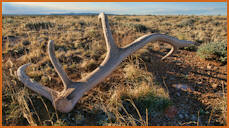
Elk Shed |
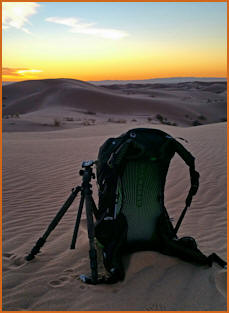
|
Cameras
The camera equipment used for this unique image collection,
spans almost 30 years. Early on Nikon, Pentax in 35
millimeter formats were used. Mark quickly moved up to
medium format cameras including Hasselblad and Pentax. When
digital arrived he embraced the technology immediately. He
continues to stay current each year as camera technologies
change and advance. Canon pro bodies and lens are currently
utilized. A collection of tripods and regular ultra light
backpacks are used for his back country travel. |
Skull Valley,
Arizona
We are often asked, if there is there really a place named
Skull Valley in Arizona? Yes and it is located about 20
miles west of Prescott. It is home to approximately 500
residents and is visited for its scenic cattle ranches,
valleys and mountains. Because of its elevation, 4,265
winters are mild and summers are not hot. Wildlife abound,
such as deer, antelope, bear, coyotes, badgers and many
other species. Skull Valley was known as the home of the
Late George Phippen, a well know western artist and
co-founder of Cowboy Artists of America. It was originally
named for the numerous skulls found in the valleys by the
original settlers.
|
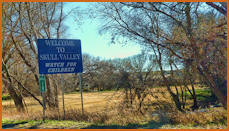
|

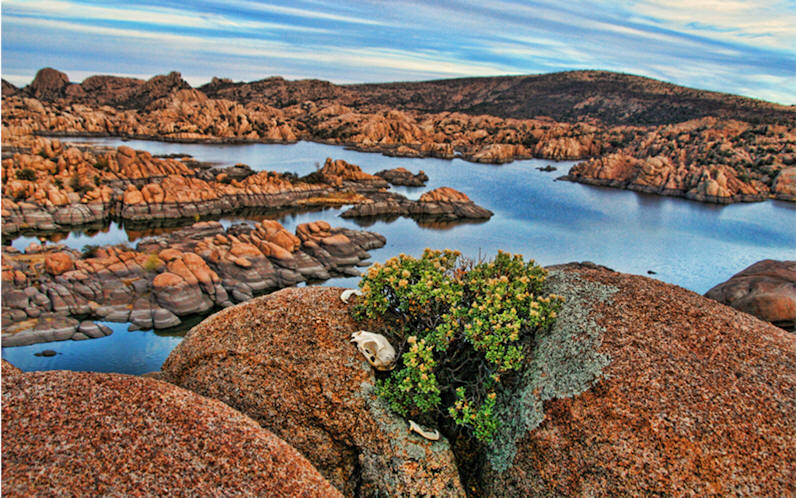
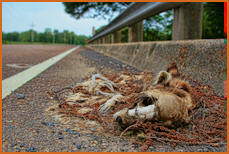
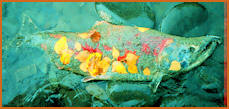
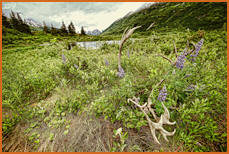








 Image Creation
Image Creation

